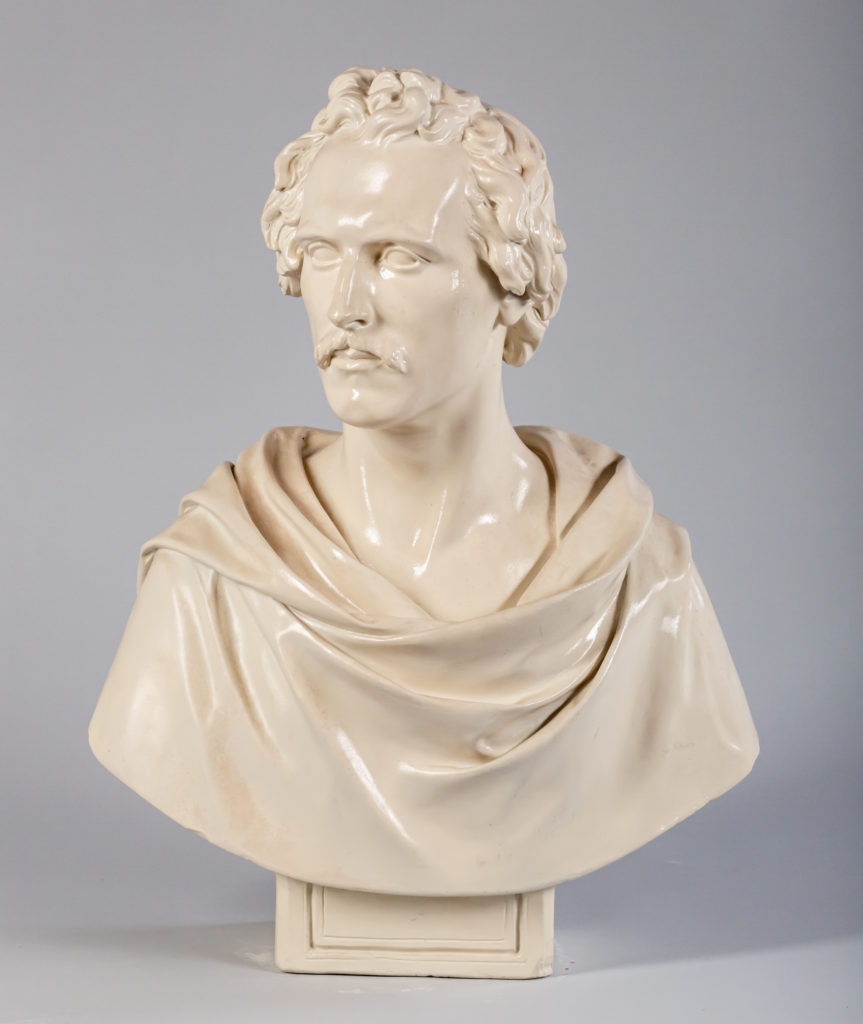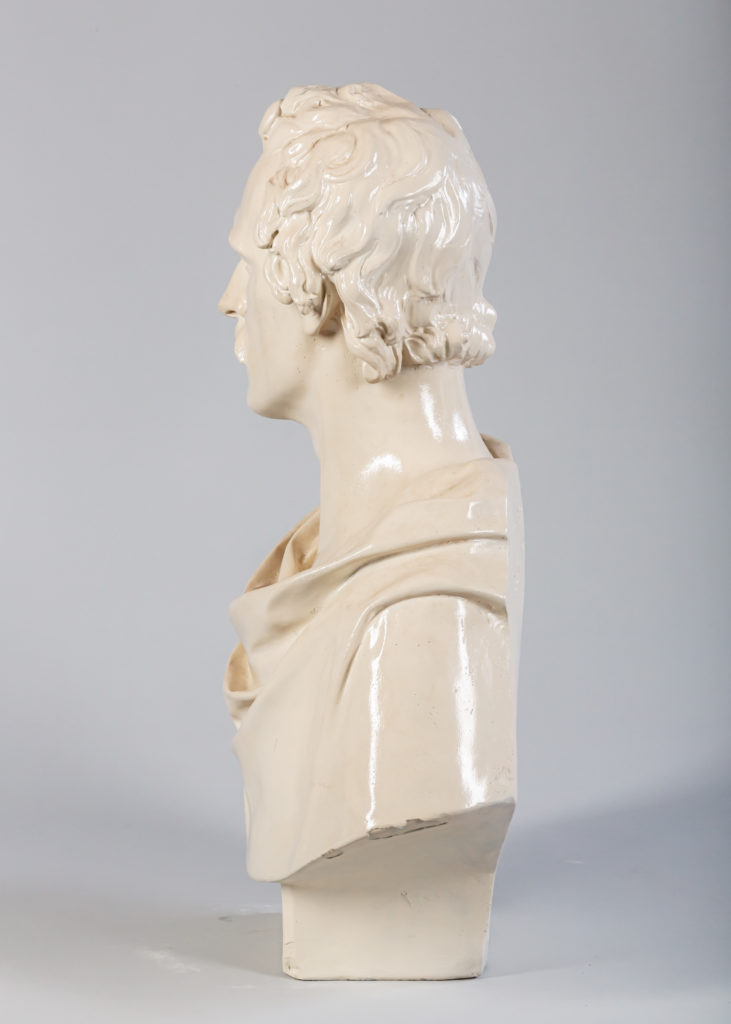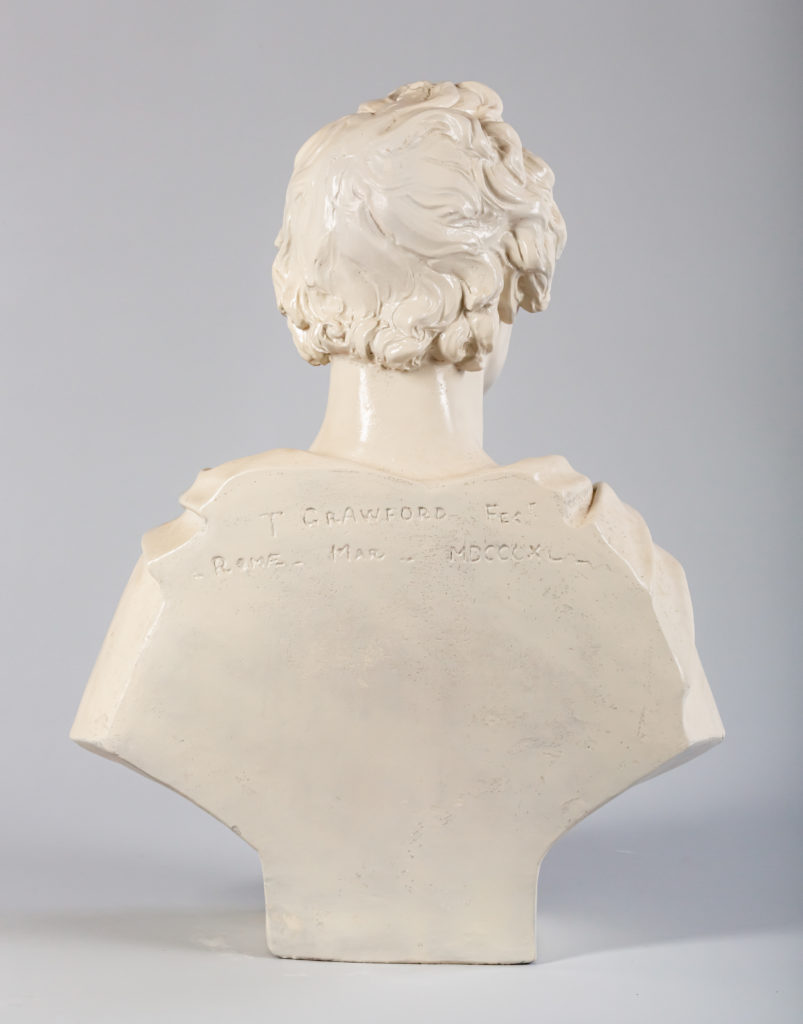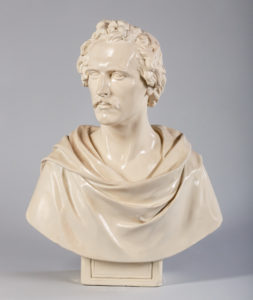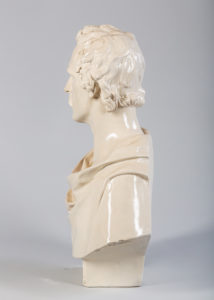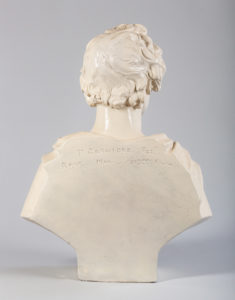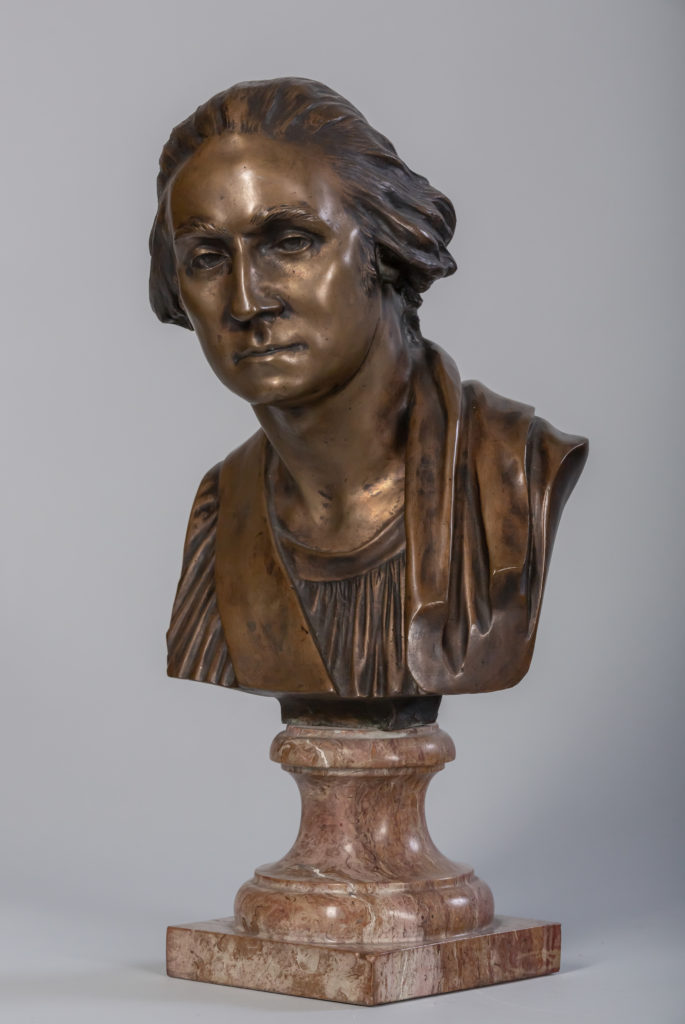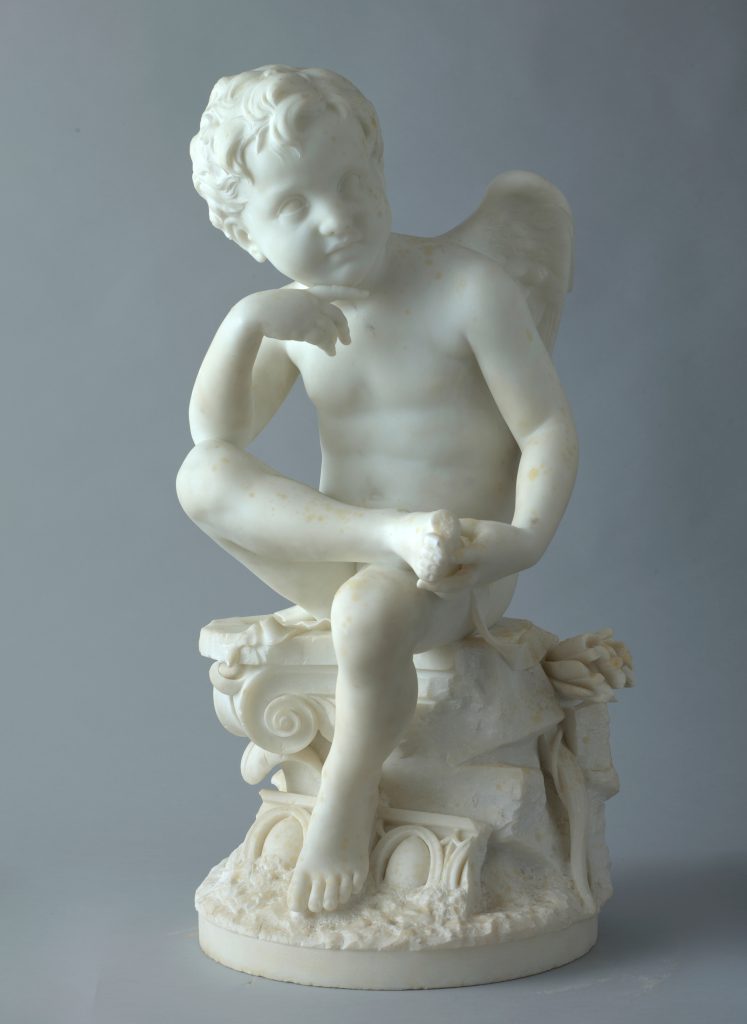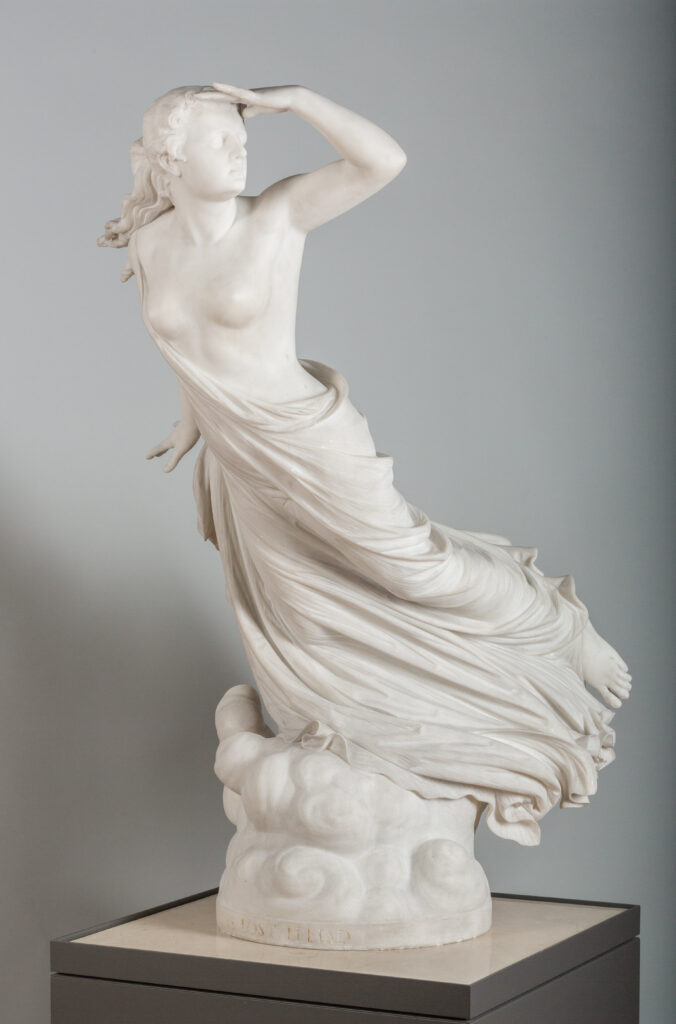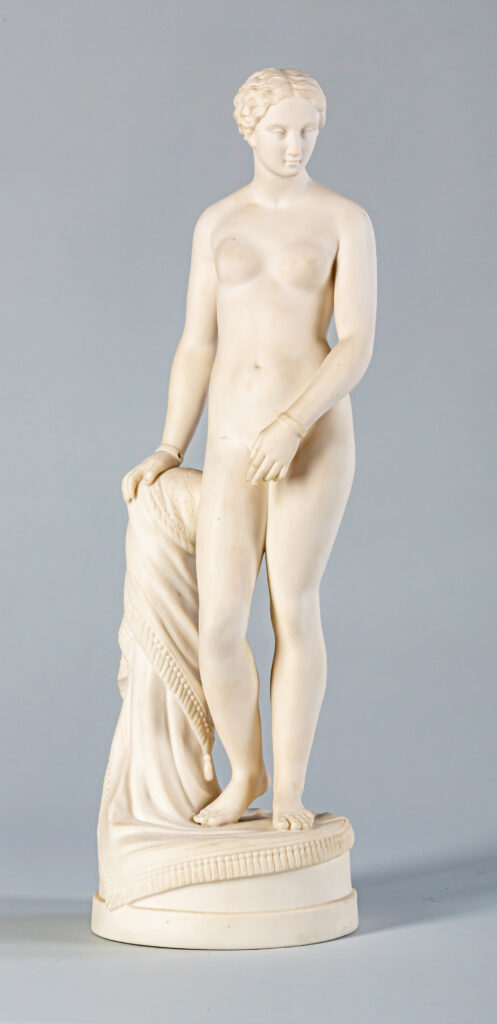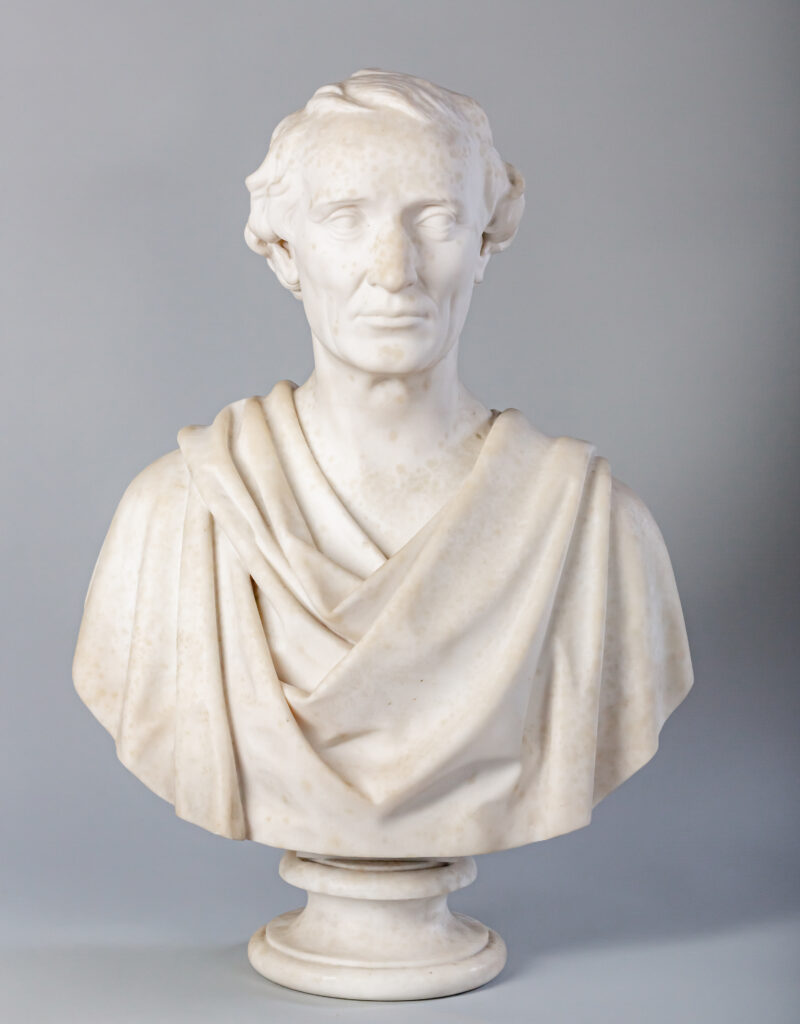Bust of Professor George W. Greene
Gift of Henry Wadsworth Longfellow, Class of 1825
1879.1Thomas Crawford settled in Rome permanently in 1835 at the age of only twenty-two. There, Crawford’s time in the Vatican galleries and his work copying ancient portraiture sensitized him to the classical conventions. It also brought him attention among wealthy American tourists, many of whom commissioned their own neoclassical portrait busts. Among these elite tourists was George Washington Greene, who matriculated at Bowdoin in 1824 and served as the American consul to Rome from 1837––1854. In Italy, Greene formed lifelong friendships with Crawford and Henry Wadsworth Longfellow (1807–1882), Bowdoin Class of 1825, with whom he travelled and whose careers he supported in equal turns. In this bust, commissioned by Greene in 1839, Crawford depicts his close friend in the togaed guise of an ancient Roman and employs glazed ceramic to mimic the effect of white marble.
Crawford was the first American sculptor to take up residence in the city and regularly haunted the Vatican sculpture galleries, which—then and now—hold one of the largest and finest collections of ancient Greek and Roman sculpture in the world. Crawford spent his earliest years establishing a studio and eking out a living making copies and reductions of ancient marbles from the Vatican collections. These included a copy in 1837 of the Vatican’s Demosthenes, a bronze copy of which today features in the BCMA facade, as well as a series of copies of ancient busts commissioned by Yale University.
Likely unable to afford the expense of a work in marble, Greene commissioned the bust in porcelain in 1839. On its completion in 1840, Greene sent the bust to Longfellow, who installed it at his home (where it remains to this day) and wrote admiringly of Crawford as “a true man of genius. The country will be very proud of him.” Nearly forty years later, after all three men had gone on to illustrious careers in the arts and letters informed by their Italian travels, Longfellow had three copies of the bust made, sending one to Greene, one to Cornell University where Greene had finished his career as a distinguished lecturer in American history, and one to Bowdoin College, where Greene’s career had begun.
Crawford’s early portraiture afforded him the means to open his own studio and to move into ideal sculpture, considered the top of the hierarchy of sculpture. In the same year that the bust of Greene was completed, Crawford began work on his first major ideal sculpture, Orpheus and Cerberus. Drawn from the myth in Ovid’s Metamorphoses and modeled after the Apollo Belvedere in the Vatican collections, the sculpture represented new ground for the American reception of antiquity. The arrival of the sculpture at the Boston Athenaeum in 1843 (today in the collection of the Museum of Fine Arts, Boston) was met with enthusiastic reception by the Boston public, bringing Crawford widespread acclaim. Crawford’s renown would bring him his most important public commission: the equestrian monument of George Washington in Richmond, Virginia. The monument, unfinished at the time of Crawford’s passing, was completed by fellow Rome-based American sculptor Randolph Rogers, whose work is also in the BCMA collections.

